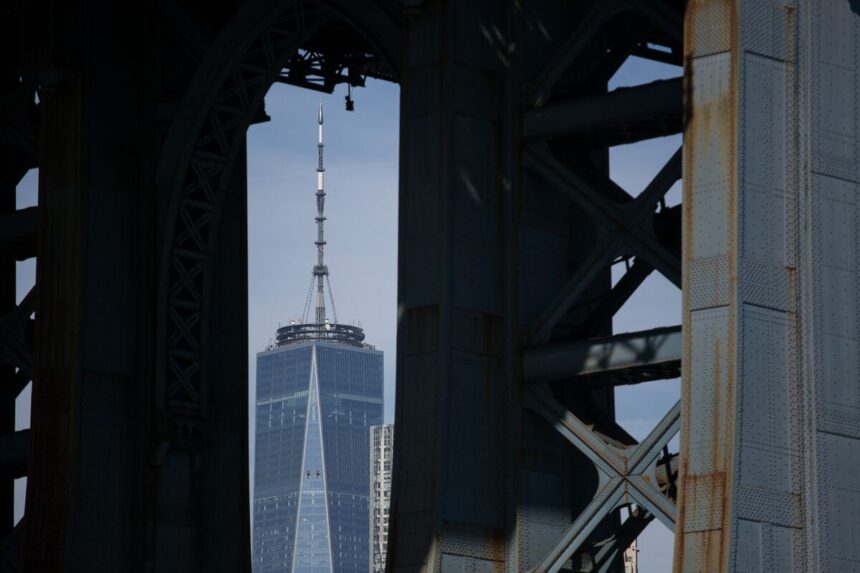I arrived at a sprawling steel facility in Hamilton, Ontario yesterday, where the scent of molten metal hangs in the air and the sounds of production have grown noticeably quieter. Workers at Walters Group, which once proudly crafted the spire atop One World Trade Center, now face an uncertain future as the second wave of Trump administration tariffs begins to bite into Canadian industry.
“We survived the first round in 2018, but this feels different,” says Peter Kranendonk, a senior manager who guided me through the facility’s cavernous fabrication hall. “The scope is broader, the rates are higher, and our American customers are already canceling orders.”
The renewed 25% tariff on Canadian steel imports to the United States represents a dramatic escalation in President Trump’s “America First” trade strategy. According to data from Statistics Canada, steel exports to the U.S. had rebounded to $5.2 billion annually after the previous tariffs were lifted in 2019. Industry analysts now project a 40% decline within six months under the new measures.
For Walters Group, which derives approximately 60% of its revenue from U.S. contracts, the math is devastating. The company had recently expanded operations, investing $18 million in new equipment specifically designed to serve the American construction market. That investment now looks increasingly precarious.
“We’ve been partners in building America for decades,” says Kranendonk, pointing to photographs of iconic U.S. buildings featuring the company’s structural components. “The World Trade Center spire was a symbol of partnership and rebuilding. Now we’re being treated like economic adversaries.”
The human toll became evident during shift change, when I spoke with Elena Kovacevic, a third-generation steelworker who fears her 11-year tenure may soon end. “My grandfather came from Croatia to work these mills. This isn’t just my job—it’s my family’s legacy,” she tells me while colleagues nod in agreement. The company has already reduced shifts and implemented a hiring freeze, with layoffs appearing increasingly inevitable.
The U.S. Trade Representative’s office defends the tariffs as necessary to protect American steel production from what they term “unfair trading practices.” In a statement released last week, they cited a 17% increase in Canadian steel imports to the U.S. in the past fiscal year as evidence of market disruption. However, data from the World Steel Association shows this increase largely reflected recovery from pandemic-related disruptions rather than aggressive export policies.
Canadian Prime Minister Justin Trudeau has called the tariffs “completely unjustified” and announced retaliatory measures targeting $3.6 billion in U.S. goods, focusing on products from politically sensitive states. The Canadian government has also filed a formal complaint with the World Trade Organization, though resolution through that channel could take years.
Economists warn that the impacts extend far beyond immediate job losses in the steel sector. The Peterson Institute for International Economics projects increased construction costs in the U.S. as a result of higher steel prices, potentially adding $2.2 billion to infrastructure projects nationwide. American manufacturers who use Canadian steel components in their supply chains face difficult decisions about absorbing costs or passing them to consumers.
In Buffalo, New York, just across Lake Ontario from Hamilton, I met with Richard Samuelson, who owns a medium-sized construction firm specializing in commercial buildings. “We’re stuck between impossible choices,” he explains in his office overlooking the Buffalo waterfront. “Canadian steel has been part of our supply chain for thirty years. American mills can’t suddenly replace that capacity, and the quality alternatives from overseas come with their own tariffs.”
Industry experts at the American Institute of Steel Construction acknowledge domestic production capacity utilization has increased to 81% from 73% since the tariff announcement, creating approximately 1,200 new jobs in American steel mills. However, downstream manufacturers using steel report cutting nearly 2,700 positions in the same period as input costs rise.
The irony isn’t lost on Hamilton’s steelworkers. “Our industries are so integrated that hurting us ultimately hurts them,” says Michael Torres, a union representative at Dofasco, another major Canadian producer. “The steel crossing this border has been building both countries for generations.”
Back at Walters Group, executives are exploring alternative markets in Europe and Asia, but acknowledge the complexities of pivoting an entire business model. “We’ve survived for 65 years by being adaptable,” Kranendonk tells me as we watch massive steel beams being prepared for shipment. “But adaptability requires time, and these tariffs hit without warning.”
As the sun sets over Hamilton’s industrial skyline, the question remains whether these integrated North American supply chains can be unwound without significant damage to both economies. The steel that once symbolized partnership in rebuilding after tragedy now stands at the center of an economic conflict between longstanding allies.
For Elena Kovacevic and thousands of Canadian steelworkers like her, the political calculations behind trade policy have very real consequences. “They talk about national security,” she says, “but we’ve been building America’s security together for decades.”






